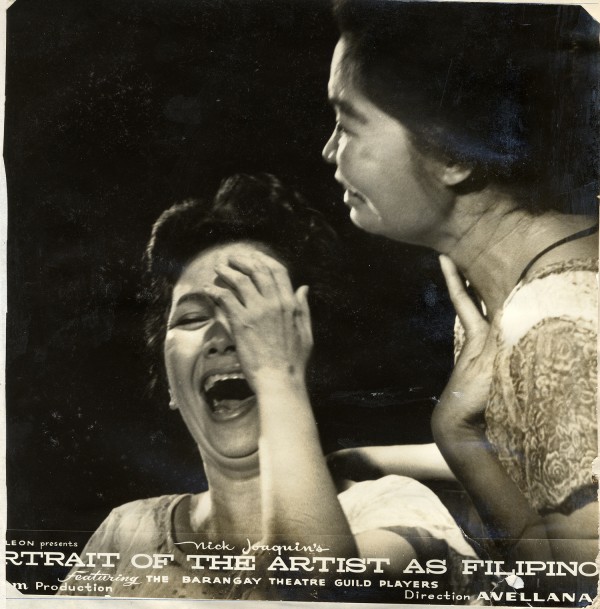Restoring ‘Portrait,’ the work of 3 national artists

Daisy Hontiveros-Avellana (left) as Candida, Naty Crame-Rogers as Paula. CONTRIBUTED PHOTO/Mike de Leon
Restoring a classic film like Lamberto V. Avellana’s “A Portrait of the Artist as Filipino” can be compared to a treasure hunt, and in some instances, to assembling a giant jigsaw puzzle.
It can also be like an archaeological dig, said elusive filmmaker Mike de Leon, who is spearheading the digital restoration of the 1965 film produced by his late father, Manuel de Leon.
“Restoring films … is like unearthing artifacts; [in this case, digging up] actual documents from a bygone era,” said the award-winning director behind such screen gems as “Itim,” “Batch ’81” and “Kisapmata.”
Restoring “Portrait” can also be considered a landmark cultural event, declared De Leon, as the film showcases “the work of three national artists.”
Explained Briccio Santos, chair of the Film Development Council of the Philippines (FDCP): “The film was adapted from a play by Nick Joaquin, was directed by Lamberto Avellana, and top-billed by Daisy Hontiveros-Avellana. All three of them are national artists, which underlines the film’s cultural significance.”
Article continues after this advertisementGreat heritage value
Article continues after this advertisement“Portrait” also has great heritage value, Santos added of the restored classic that premieres at the Cultural Center of the Philippines (CCP) on April 25. “The film pays homage to the walled city of Intramuros and our people’s collective memory.”
Sadly, said De Leon, he can’t stress enough the urgency of the need to preserve our film heritage.
“It is sad to state that, to my knowledge, there is no longer any complete 35mm film original of any movie from that era,” the filmmaker said. “As in other works of art in other disciplines like music, painting and architecture, we have lost so much and are losing much more still.”
“Portrait,” whose restoration was partly funded by the FDCP and the National Film Archive of the Philippines (NFAP), premieres in April, which marks the Avellana classic’s 50th anniversary, as well as the birth centennial year of its director (Avellana, in February), and producer (the older De Leon, in April).
The younger De Leon expressed the hope that the film classic would find an audience among today’s youth despite its dismal box office showing in 1965 when he first saw it.
“My classmates at Ateneo shared my perplexity: Why was the film in English? When it failed miserably at the box office, I thought it was because of the English dialogue.”